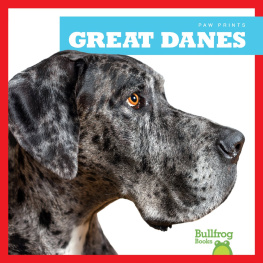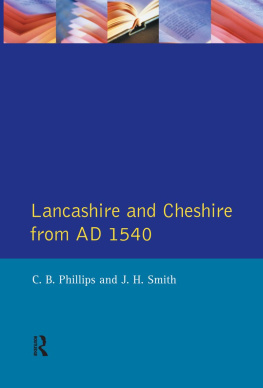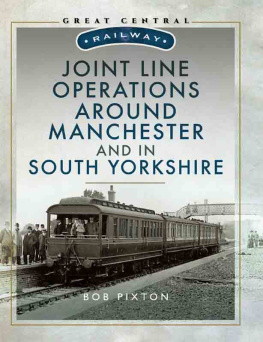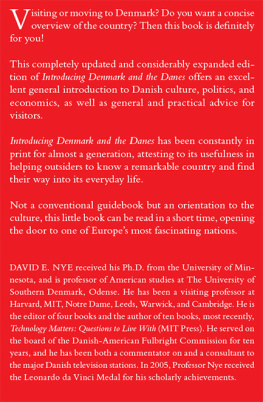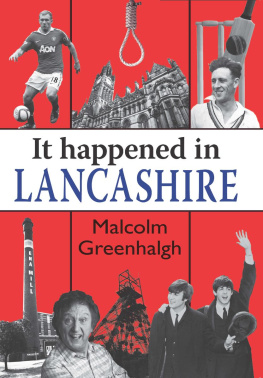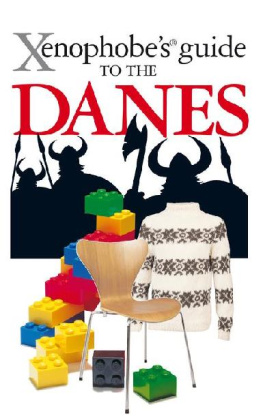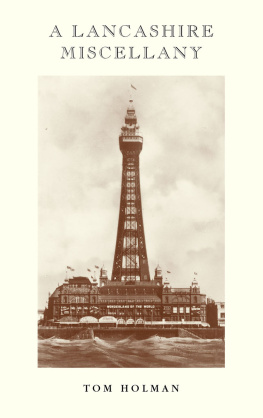Cover created by Transcriber, using an illustration from the original book, and placed in the Public Domain.
On some devices, clicking a blue-bordered illustration will display a larger version of it.
The Danes in Lancashire
The Danes in Lancashire
and Yorkshire
BY
S. W. PARTINGTON
ILLUSTRATED
Sherratt & Hughes
London: 33 Soho Square, W.
Manchester: 34 Cross Street
1909
PREFACE.
The story of the 'childhood of our race' who inhabited the counties of Lancashire and Yorkshire before the Norman Conquest, is an almost blank page to the popular reader of to-day. The last invaders of our shores, whom we designate as the Danes and Norsemen, were not the least important of our ancestors. The History of their daring adventures, crafts and customs, beliefs and character, with the surviving traces in our language and laws, form the subject of this book.
From the evidence of relics, and of existing customs and traditions, we trace their thought and actions, their first steps in speech and handicraft, and the development of their religious conceptions. Our education authorities have realized the fact that "Local Names" contain a fund of history and meaning which appeals to the young as well as to the adults; and the county committees have been well advised to recommend the teaching of History and Geography from local features and events.
Some articles written by the late Mr. John Just, M.A., of Bury, on our early races, and elements of our language and dialect, formed the incentive to the writer to continue the story of our Danish ancestors.
To the following writers we are indebted for many facts and quotations: H. Colley March, Esq., M.D.; W. G. Collingwood, "Scandinavian Britain"; W. S. Calverley, "Stone Crosses and Monuments of Westmorland and Cumberland"; Dr. W. Wagner's "Tales and Traditions of our Northern Ancestors"; Mr. Boyle, "Danes in the East Riding of Yorkshire"; Mr. J. W. Bradley, B.A., of the Salt Museum, Stafford, "Runic Calendars and Clog-Almanacs"; Rev. J. Hay Colligan, Liverpool; Professor W. A. Herdman, Liverpool; Mr. Jas. T. Marquis, of the Battle of "Brunanburh"; Dr. Worsac, "Danes in England."
Messrs. Titus Wilson & Son, Kendal, Plates, "Map of Races," etc.; Swan, Sonnenschein & Co., London; Williams, Norgate & Co., London.
To Charles W. Sutton, Esq., Free Reference Library, Manchester, for valuable advice and assistance grateful thanks are now tendered.
S. W. PARTINGTON.
Bury , October 4, 1909.
CHAPTER I.
Invasion and Conquest.
A victorious people have always a wide-spreading influence over the people subdued by them. An inferior race never withstood a superior one. The very fact that the Danes gained not only an ascendancy in many parts of England during the Anglo-Saxon dynasties, but even the government of them all, is a proof that they were at that period a race of individuals superior to the natives of the land. The indigenous Britons felt the ameliorating influence of the Roman superiority and the civilisation which formed an element of the Roman sway. The Danes exercised and maintained an influence equal to the extent of their amalgamation for the general good of the country. The Romans were as much superior to the aboriginal Britons as the English of the present day are to the Africans and Sikhs. The Saxons were an advance on the Romanised Celt, while on the Saxons again, the Danes or Northmen were an advance in superiority and a great element of improvement. Leaving the Danes to tell their own tale and write their own histories in favour of their own fatherland, we undertake to sketch out their connection with our own county of Lancaster, with the permanent, and still existing, effects of that connection. Hitherto history has unfolded nothing as to the date when the "Vikings" first visited the Lancashire coast, plundering the county, and slaughtering the inhabitants. The Danes first visited the eastern coasts about the year A.D. 787, as narrated in the Saxon Chronicle. In the year 894 the city of Chester fell into their hands, under the redoubtable Hastings. This celebrated place the Danes fortified, and henceforward, along with the other cities of Derby, across the island, held at intervals until their power waned by the amalgamation which eventually constituted one people. Local names are the beacon lights of primeval history. The names of places, even at this remote period of time, suffice to prove that the Danes left an impression of superiority by their invasion. At this time the Danes invaded the coast of Lancashire, and formed settlements therein. Cumberland and Westmorland were under the dominion of Cumbrian Britons. At this early period the Danes have so intermingled with the Anglo-Saxons, as to influence the names of the hundreds into which the shire was sub-divided. No chronicle may register this fact, but the words do, and will do, so long as they constitute the signs and symbols of ideas and things. The northern hundred of the shire was named Lonsdale, and extended not only over the district of Lunesdale, but also included the territory north of the sands. The second hundred into which the shire was divided was Amounderness. If we allow "ness" to be of strictly Scandinavian origin, then this hundred has a strictly Danish or Norse name, "Amounder" being the first Viking who settled in the Fylde country. Blackburn, pronounced "Blakeburn," is the third name of a hundred which lies more inland, but having little or no coast line within the shire. Inland the Scandinavian influence diminished. Hence the genuine Anglo-Saxon name of this division; in the early times "Blagburnshire." The fourth hundred is that of Salford, also inland, hence under no Danish influence. The name is genuine Anglo-Saxon and perhaps this hundred includes natives less mixed with Scandinavian population than any other in the north of England. The broad Anglo-Saxon frame is seen to perfection in the country districts, and the light, ruddy complexion. The men were made for endurance and slow in movements. It would be a difficult task to get them to move if they felt disinclined to do so. The last hundred has much sea coast, and came therefore much under Danish influence. Hence the name, West Derby Hundred. No one who knows anything of our early history will hesitate to pronounce this name altogether Danish, so that three out of the five hundreds into which the county was apportioned were under Danish domination. "Bi," Danish, in modern English "by," was the common term given by Danish settlers to their residence. Derby or Deorby means not the residence or home of the deer, but a locality where the animals abounded. The Danes had, more than any other people, a reverence for the dead. Wherever a hero fell, even if but a short time sufficed to cover his remains, this was done; and if nothing better to mark the spot, a boat which brought him hither was placed over him, keel uppermost. Failing a boat, a "Haugr" or mound was raised over his grave. When Christianity upset these "Hofs," or sacred enclosures of Odin and Thor, then crosses were erected over the Christian graves. This accounts for the universal number of "Crosbys" in the Danish district of the kingdom. Conquered Rome converted and conquered its barbarian and heathen masters to the Cross. Anglo-Saxon converted his Danish neighbour, and subdued him to the Cross. The higher the superstitions of the Pagan the greater the devotee when he is converted.



